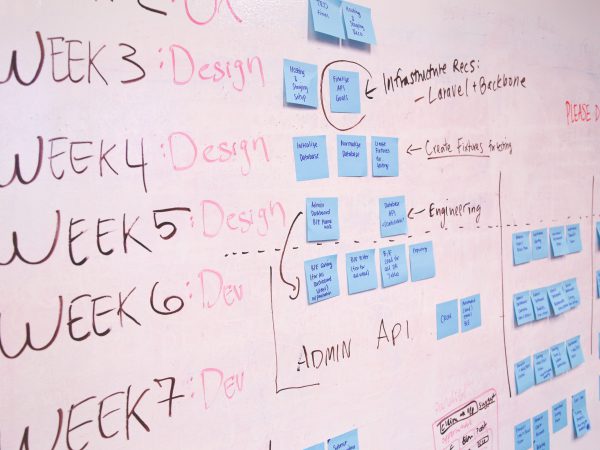
The software development life cycle is the way developer teams build their products. It is the sequence of processes that ensure product quality, reliability, and cost-effectiveness. Although there are numerous software development methodologies, they all have similarities in software development life cycle phases. With that said, let’s discover the 7 stages of the most common software development life cycle models.
Stage 1. Planning: Initial Project Estimations
The majority of software development projects begin with planning: the planning of the project scope, schedule, and costs. Planning is the stage for road mapping future software product development activities.
Here’s why the planning stage is crucial:
- It’s essential for understanding project sizes. You need to understand how much time and money the software product will take to develop;
- Planning is integral to seeing the bigger picture of a project. Although you may believe that you can see the project scheme in your head, it is often far more complex than you imagine.
Stage 2. Requirements: List Of Needed Functionality
As soon as you come up with a project plan, it’s time to list a set of features you want to see in your software product. Here’s how you can make this list exhaustive:
- Split functionality by the system modules. Separate reporting, calculating, rendering, and UI functionality, so you can focus on each category;
- Start by listing all the features you may need. This will considerably help you to keep all the options in mind and select the truly needed ones.
Stage 3. Solution Design: Creating A Software Prototype
Now that you have all the project requirements, it’s time to start prototyping a product. This phase of software development life cycle includes building a solution scaffold and architecture.
One more thing your team should deliver during a solution designing stage is project documentation. As soon as you are done with the software product architecture, get down to documenting the existing components, modules, services, and other system elements.
Here’s why it’s vital to create software product documentation in this development life cycle stage:
- The next phases will rely on the created architecture heavily. This means the clear definition of the system elements’ structure and purposes is a must;
- You’ll have to continue writing documentation later. With that said, it’s better to document the existing core functionality, so you have time and don’t forget to include all the crucial points in the future.
Stage 4. Development: Solution Engineering and Implementing
This phase isn’t the same as the previous one. While designing and prototyping aims to create a generic project structure, this software development life cycle stage serves to enhance this structure with features and make the end product user-friendly and marketable.
The development phase is when a company invites additional developers (often junior specialists) to develop and implement the functionality you’ve scheduled in the requirements stage. This is the stage when a product gains all its functions and becomes fully-featured.
Read also: Tips On Improving Your Software Product Development Process
Stage 5. Testing: Quality Assurance
Big projects come with big error risks. Fortunately, the modern SDLC approaches the issue with a testing phase. No matter how skillful and experienced your developer team is, the development and deployment of the bug-free and secure app without testing would be pure luck.
The testing stage includes but is not limited to the following testing processes:
- Unit testing. Before assessing the overall system quality, you need to test each set of functionality separately;
- Performance testing. Is your solution slow or has some unexpected behavior? This process aims to detect and eliminate performance-related issues;
- Security testing. Is there a way to access the protected data from outside without permission? Or is there vulnerability that can overload the whole system? Security testing is a process of fighting these vulnerabilities;
- Integration testing. Does your system perform well as a whole? Does it work correctly with external integrations? Integration testing focuses on testing the system as a single instance.
Read also: Software Delivery Management for Quality Assurance
Stage 6. Deployment: Solution Configuration And Delivery
As you finish the testing routine, it’s time to deploy your solution. The deployment approach depends on the company level and experience. Mature enterprises implement automatic delivery, meaning the deployment involves little or no manual actions to deliver a solution to the production environment. At the same time, SMEs and industry-specific deployments still may require manual solution installation.
Stage 7. Support: Maintenance And Operations
The last software development life cycle phase is the support phase. It is a project stage when the solution is already working in the production environment, and all you have to do is make sure the system operates and stays performant.
Here at Gravum, we believe it is not only about monitoring malfunctioning you could miss during the testing phase. The IT world is a competitive environment, meaning there can be attacks on your servers to shut them down. Be ready for challenges.
The Bottom Line
As you can see, the conventional dev cycle introduces all key stages to develop your reliable software product on time. If you are looking for an experienced software development team, reach out to Gravum. We know how to optimize the software development life cycle for your project to achieve the best cost-effectiveness possible.



